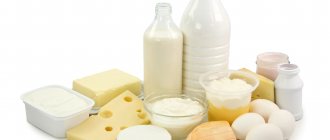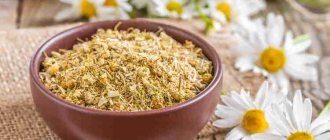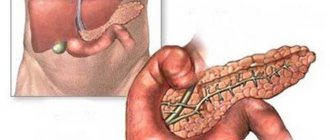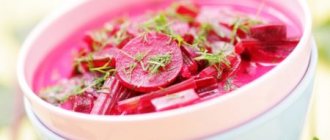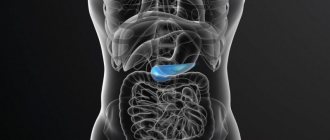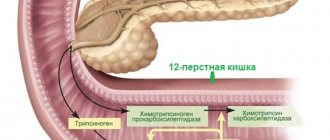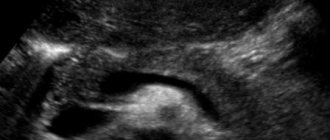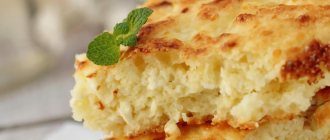This fact is not surprising, because cottage cheese is a source of easily digestible proteins, allowing the human body to:
- produce protease inhibitors;
- increase the efficiency of the immune system;
- limit the inflammatory process;
- reduce the likelihood of complications.
Eating cottage cheese in its pure form for pancreatitis is allowed only if this product is fresh and contains fat, the amount of which does not exceed 3%.
So that cottage cheese does not damage the stomach during pancreatitis, its acidity should not exceed 170 units on the Turner scale. There is more than one recipe for gentle dishes recommended for pancreatitis.
You can use cottage cheese either in its pure form or as part of a pudding or casserole.
Sauce recipe
In case of pancreatitis, sour cream can be used to prepare a dietary sauce for meat and fish.
You will need to bring 125 grams of sour cream to a boil. In another container, combine 125 grams of cold product and 25 grams of flour, which is pre-dried in the oven. Then mix the sour cream and flour mass and hot sour cream, bring to a boil again and filter. sour cream sauce
Curd pudding
The oven is heated to 180 degrees. 350 grams of low-fat cottage cheese are ground to obtain a soft, airy mass. The yolks from 4 eggs are separated and mixed into the cottage cheese. The whites are put in the refrigerator.
Then add 80 grams of sour cream, a tablespoon of starch and semolina to the mixture. Then mix everything well with a blender. Beat the whites well, adding 100 grams of sugar slowly. The foam is carefully added to the curd mass and mixed in. The mass is laid out in a mold and covered with foil. The pudding is baked for half an hour. Then the foil is removed and the dish is baked for another 20 minutes.
Features of the consumption of dairy products at different stages of the disease
Depending on the characteristics of the disease, patients' diet should be adjusted. Most products that are allowed during the remission stage can cause significant harm to health during an exacerbation.
Acute phase of pancreatitis
With the first appearance of an attack of pancreatitis, you must immediately exclude all dairy products from your diet. Only from 2-3 days can you introduce milk porridge in liquid form into the menu. It should be prepared with milk 1 or 2.5% fat or diluted with water in proportions 1 to 1.
A week after an exacerbation, you can eat a small amount of low-fat cottage cheese. Product intake starts at 50 g. After a week, the daily norm is 100 grams. You can cook a steam omelet with diluted milk.
If positive dynamics are observed, then kefir can be introduced into the diet. It should be consumed gradually, also starting with 50 grams on the first day. You can increase the amount of kefir consumed to 100 grams in a week.
You can add a small amount of butter (butter or vegetable oil up to 5 grams per day) to vegetable or fruit purees. If a person has pancreatitis, then he should adhere to this diet until remission is achieved. This takes approximately 2 months.
Chronic phase of pancreatitis
A few months after the exacerbation of this disease, with the onset of a stable phase of remission, the menu of people with inflammation becomes more extensive.
Fermented milk products have a beneficial effect on the damaged pancreas, gastrointestinal tract and the body as a whole. Milk is also used only in diluted form for the preparation of:
- Jelly, omelettes;
- Porridge and first courses.
The daily consumption of butter increases to ten grams. Cottage cheese and kefir are retained in the diet, but with a small percentage of fat content. Kefir can be replaced with another dairy product, but you need to ensure that their fat content does not exceed 2.5%.
As symptoms subside, foods such as:
- Ryazhenka;
- Yogurts. Most patients are interested in the question: is it possible to consume yogurt for pancreatitis, and in what form? You can drink yogurt, but not more than one glass per day. Additionally, it is also important to consider what additives it contains.
After the permission of the attending physician, dairy drinks with sweeteners such as:
- Sweetener;
- Honey;
- Puree made from berries and fruits.
The menu also includes products such as cream and sour cream, but their fat content should not exceed 10%
It is important to note that they can be consumed no more than every other day and no more than one tablespoon.
Pancreatitis and diet
The diet consists of following certain recommendations and rules. It is necessary to eat properly in accordance with the intake and amount of food consumed. Let's look at them:
- You can consume no more than 200 grams of food at a time. Excessive food load can lead to overload of diseased organs, as well as cause a severe attack of pain;
- Steaks, pizza, and sushi should absolutely not be consumed even during the period of remission;
- It is very important that the temperature of the food consumed is not higher than 40 degrees. In addition, cold food is also not allowed to be consumed;
- It is important to consider the calorie content and the ratio of fats, carbohydrates, and proteins in the food consumed. The food consumed must be balanced in all these parameters.
Products and dishes recommended for consumption with CP
When chronic pancreatitis is detected in a person, it is recommended to include in food:
- some types of flour products;
- first courses prepared according to special recipes, which are designed taking into account dietary requirements;
- meat dishes prepared according to dietary recipes;
- fish dishes prepared using low-fat varieties;
- dairy dishes prepared taking into account dietary requirements;
- cereals;
- vegetable dishes;
- fruits.
In the event of an exacerbation of the chronic form of pancreatitis, the diet becomes stricter, and in the first few days of an aggravated condition, therapeutic fasting is carried out, which allows you to relieve the gastrointestinal tract and allows the gland to partially recover. If the function of protein digestion is weakened, their amount in food is reduced.
In case of chronic pancreatitis from flour products, it is allowed to eat stale white bread, white bread crackers and unsweetened dry biscuits. The consumption of any baked goods by patients with chronic pancreatitis is strictly prohibited.
It is allowed to drink weak tea, diluted with milk; it is recommended to drink a decoction of rose hips as a drink.
ul
The role of nutrition
It is difficult to overestimate the role of nutrition in treatment, because it serves as a tool for influencing the organ. To prevent the progression of the chronic form or transition to this type of acute illness, you need to adhere to a number of rules:
- give up alcohol;
- provide the protein required for tissue reconstruction;
- adhere to restrictions and avoid foods that cause enzymatic activity.
Doctors say that in most cases, repeated manifestations are caused by non-compliance with the diet. After all, if an acute attack can be cured, then the chronic form of disorders of the pancreas remains a lifelong diagnosis. But as soon as the pain subsides, the person returns to consuming harmful components of the diet, after which complaints are not long in coming!
Important: you will have to constantly comply with the restrictions, because violations of the recommendations lead to the transformation of tissue into scar tissue, which affects functionality.
ul
Contraindications
What should you not eat if you have pancreatitis? The choice of dishes implies a minimal load on the gastrointestinal tract, including the inflamed organ. A number of products are prohibited:
- Fatty meats cause excessive release of enzymes, which can lead to exacerbations. Since the outflow of the produced secretion worsens, it affects not the nutrients, but the tissue of the pancreas itself. Fats and broths are also not beneficial if they are prepared with lamb or pork.
- Fish should be consumed with caution, as fatty mackerel or salmon will cause aggravation. Fried foods and canned food should also not be served.
- Fresh bread and pastries are contraindicated, but they can be replaced with a small amount of crackers.
- Vegetables will be harmful if eaten raw, and radishes, radishes and cabbage should be completely avoided. Fresh fruit will also create a load, so they are served baked.
- By-products (liver, kidneys and brains) cause increased production of enzymes, therefore they are included in the list of contraindicated dishes.
You should also not eat fried, fatty, spicy, spices, sausages, smoked meats, pickles and marinades, and cocoa, coffee, store-bought juices and excessively cold liquids are excluded from drinks. By taking these rules into account, you can bring the disease into stable remission.
ul
Menu without exacerbations
During an attack of pancreatitis, the patient is prescribed fasting, which lasts up to 3 days. Then a person with a protracted form of the disease is prescribed a diet aimed at the following:
- decreased enzymatic activity;
- reducing stagnation of produced secretions.
Immediately after fasting, the basis for the menu will be diet 5, which implies a number of rules:
- products are boiled or steamed;
- dishes are served in liquid or semi-liquid form;
- anything too hot or cold is excluded from the diet;
- you will need to sit down at the table 5-6 times a day, limiting the size of portions in order to reduce the load on the organ;
- the amount of salt is kept to a minimum, even during the period of improvement, not exceeding 8 g.
Important: doctors say that compliance with these rules will ensure 90% success of treatment.
ul
Menu option No. 5
The diet is presented in 2 types, and the 1st must be followed for 14 days. The list of products in this case implies an emphasis on carbohydrates, so at first the approximate diet will be as follows:
- crackers;
- rice water;
- tea.
The serving size should not exceed 300 g, and new components are gradually included in the menu:
- puree soup from lean meat;
- lean fish soufflé;
- curd pudding;
- steamed egg white omelette (the yolk is a prohibited product because it causes the secretion of bile);
- puree or vegetable puddings from carrots, cauliflower or potatoes;
- pureed porridge without sweeteners.
Important: the total calorie content at this stage does not exceed 1800 kcal.
ul
Increase in calories
The duration of the previous version of the diet should not take more than 2 weeks, because the nutrient content must be gradually brought closer to the physiological norm. What should you not eat if you have pancreatitis? The products listed above are still prohibited, but it is permissible to make some concessions: sometimes eat mild cheese, ½ yolk per day, a small amount of strawberries or bananas.
To avoid malfunctions of the pancreas, you should not overstrain it. The approximate menu looks like this:
- In the morning, you can offer the patient cottage cheese with a small amount of low-fat milk or pureed semi-viscous porridge. Although millet, corn and legumes should be excluded, rice, buckwheat and oatmeal dishes can be safely placed on the table.
- After a few hours, you are allowed to snack on a baked apple and tea.
- For your next meal, vegetarian soup, boiled chicken without salt, and carrot puree are suitable. For drinks, pureed dried fruit compote is acceptable.
- Low-fat kefir will satisfy your hunger, since its effect will be gentle on the pancreas.
- For dinner, boiled fish, soufflé, omelet and tea with milk are served.
When compiling a diet, you need to consider what you can eat with a chronic form of the disease. Well-being directly depends on patience and the ability to follow recommendations even in the absence of attacks for a long time.
ul
Recipes for dietary desserts made from cottage cheese
With chronic inflammation of the pancreas at the stage of remission, you can eat sweet and healthy foods. For example, pie, casserole or cheesecakes. How to prepare dietary curd pudding for pancreatitis?
For dessert you will need a number of products: semolina (2 small spoons), cottage cheese (200 g), proteins (2 pieces), some water and sugar. With stable remission, you can add butter and grated carrots to the dish.
The whites are whipped and mixed with the remaining ingredients. It is advisable to bake or steam curd pudding for pancreatitis. To improve the taste, the dish can be supplemented with apple or strawberry cream.
Also, for pancreatitis and cholecystitis, you can prepare a delicate cheese soufflé. For this dessert you will need a number of ingredients:
- low-fat sour cream (100 g);
- cottage cheese (550 g);
- agar-agar or gelatin (10 g);
- small carrot or orange zest.
Cottage cheese is mixed with sour cream or yogurt without sugar. Then grated vegetables or fruits are added there. Everything is whipped with a blender and mixed with sugar or its substitute.
Next, gelatin and agar-agar are added to the mixture. Grease the mold with oil and spread the curd mass on it in an even layer.
The soufflé is baked in the oven for 20 minutes (180 degrees). The dessert is served when it has cooled down.
For a couple
The recipe for steamed curd pudding differs only in the preparation method. The same ingredients are used, only the curd mass is not baked, but steamed. For some gastrointestinal diseases, baking is contraindicated. How to prepare a cottage cheese diet dessert if you do not have the necessary equipment? You can cook on the stove using a water bath. To do this you will need two pans of different diameters. Pour water (a little less than half) into a large saucepan and bring to a boil. Place the mold with the curd mass in a smaller pan, then place the small pan in the larger one and cover with a lid.
Cottage cheese in the acute stage of the disease
After the end of the fasting period, curd products can begin to be introduced into the patient’s diet on the second or third day. At the same time, you should adhere to the principles of fractional nutrition and not consume cottage cheese with milk, this provokes the development of irritation of the pancreas.
What kind of cottage cheese can be consumed for acute pancreatitis?
In order not to provoke the development of an exacerbation of the disease or deterioration of the patient’s condition, it is necessary to know about the peculiarities of consuming cottage cheese during this period.
- In order not to increase the load on the pancreas, it is necessary to introduce into the menu a product with a fat content of no more than 3%.
- The cottage cheese must be fresh, or it is better to prepare it yourself. To do this, you need to take a liter of milk (preferably pasteurized) and boil it. Pour the juice of half a lemon into the boiling milk, and when it curdles, remove the pan from the heat and discard its contents through a double layer of gauze. After the whey has completely drained, the homemade cottage cheese is ready.
- In order not to cause an increase in the acidity of gastric juice, the acidity of the cottage cheese should not exceed 170 Turner units.
- You can use the product in shabby form, or you can prepare steamed pudding.
- Calcium deficiency can be compensated for by dishes prepared from calcined cottage cheese. To prepare such a product at home, you need to add calcium (lactic acid or chloride) to the milk.
- You cannot consume curd pudding or mass daily, 2-3 times a week is enough.
- The amount of cottage cheese should not exceed 250 g. per day, and you should not eat more than 150 grams of this product at one time.
In the first days, they most often consume sweet mass, pudding or soufflé, but later salty cottage cheese products can be introduced into the diet.
Rules of use
In order to ensure that after a sick person takes natural cottage cheese or any dish prepared from it, his general condition does not deteriorate, one should know the immutable features of consuming this fermented milk product during the progression of pancreatitis. They are as follows:
- to eliminate the factor of increasing the load on the digestive organs, this product is introduced into the daily menu only with low, no more than 1.5%, fat content;
- the acidity of cottage cheese consumed by a sick person should not exceed 170 units on the Turner scale;
- before eating this product in its natural form, it should be thoroughly ground, and also a small amount of low-fat sour cream and a teaspoon of honey should be added to it;
- When preparing dishes from cottage cheese, only cooking methods such as boiling in water, cooking with steam or baking without a golden brown crust in the oven are used.
People with pancreatic problems should remember that when it becomes inflamed, experts recommend consuming cottage cheese prepared independently at home. The recipe is quite simple, so anyone can cook it.
In order to obtain a high-quality and useful product, you must perform the following steps:
- Place pasteurized skim milk in a glass jar and ferment it until it becomes sour milk.
- If necessary, remove the layer of settled cream from the surface in order to further reduce the fat content of the resulting product.
- Place the jar of yogurt in a water bath and cook until its composition separates into 2 parts - a thick sediment and a whitish liquid.
- The precipitate obtained as a result of heating is homemade cottage cheese, recommended for use in dietary foods. Patients with pancreatitis often ask their doctors whether it is possible to add lemon juice to milk to speed up the process of making curdled milk. Experts categorically do not recommend this action, as it will increase the acidity of the resulting product.
Useful recipes for illness
Since during the period of remission you will have to observe certain food restrictions for a long time, you need to learn how to prepare delicious dishes from permitted foods
In this case, the diet will not become a long-term punishment, but will be perceived as a necessary precaution.
Cottage cheese dishes for pancreatitis are prepared in compliance with certain rules:
- if there is a lack of calcium in the body, then calcium chloride is added during the cooking process;
- sugar and vanillin are added only during periods of stable remission;
- It is permissible to add low-fat sour cream to puddings and casseroles.
And now some recipes for delicious cottage cheese dishes.
Healthy casserole
Curd casserole is very useful for pancreatitis. But you need to cook it correctly.
Ingredients:
- semolina – 2 tbsp. spoons;
- cottage cheese – 200 g;
- egg whites – 2 pcs.;
- sugar and vanilla to taste;
- apples – 2 pcs.
Soak semolina in warm water until it swells. Mix cottage cheese with semolina. Mix the mixture well, adding the whipped whites, mashed apples, sugar and vanilla. Place this entire mass on a prepared baking sheet and place in the oven preheated to 180°C.
Remove when the casserole is golden brown. Casserole for pancreatitis can be consumed in moderation, no more than 150 g per meal.
Curd pudding
And now about how to prepare dietary steamed curd pudding.
Ingredients:
- pureed cottage cheese – 200 g;
- low-fat sour cream - 1 tbsp. spoon;
- granulated sugar – ¼ cup;
- salt - on the tip of the knife;
- a handful of steamed raisins;
- white of 1 egg.
Beat all ingredients thoroughly with a mixer and place in a steamer pan. Set the time for 20 minutes and forget about the pudding during this time. You can let it cool in a double boiler. Cut the cooled pudding into pieces. You can customize this cottage cheese pudding recipe by adding cocoa powder or strawberry jam syrup.
Pancakes with cottage cheese and raisins
Ingredients for the dough:
- milk – 600 ml;
- egg – 1 pc.;
- flour – 300 g;
- salt – 0.5 tsp;
- sugar – 2 tbsp;
- vegetable oil – 2 tbsp.
Filling ingredients:
- cottage cheese – 200 g;
- low-fat sour cream – 2 tbsp;
- sugar – 1 tbsp;
- raisins – 50 g.
Beat the egg into the milk, add salt, sugar, vegetable oil and flour. Beat all this with a mixer and bake pancakes.
Add sour cream, sugar and soaked raisins to the cottage cheese. Mix well. Fill the pancakes with this mixture, rolling them into a tube or envelope. Place the pancakes on a baking sheet, spread sour cream on top and place in an oven preheated to 180°C for 10 minutes.
Curd cream
Ingredients:
- cottage cheese, rubbed through a fine strainer - 200 g;
- butter – 90 g;
- sour cream – 100 g;
- condensed milk - 90 g;
- instant coffee – 1 tsp.
Benefits and possible harm
The composition of the cottage cheese obtained from milk fermentation includes 6 vitamins, among which the top three are riboflavin (B2) and nicotinic acid (PP), which are involved in lipid-hydrogen metabolism, and retinol (A), which is a strong antioxidant that increases the body's defenses.
100 g of low-fat cottage cheese contains 18-20 g of protein, necessary for organ growth and cell restoration.
Milk protein is easier and faster absorbed by the body than other plant and animal proteins. Thanks to this circumstance, the body is filled with minerals and amino acids in record time, and little energy is expended.
Cottage cheese, when consumed regularly, normalizes the microflora in the body and improves human health, so it is recommended for children and the elderly, pregnant women and those who suffer from diseases of the central nervous system and gastrointestinal tract.
But a dairy product can sometimes cause the following harm to the human body:
- cottage cheese causes allergies in some people due to individual intolerance to its ingredients;
- If you purchased a low-quality product on the market and ate it raw, bacteria may enter your intestines and cause upset or bloating of the organ. The same misfortune will befall a person who eats cottage cheese that has expired;
- people who are addicted to delicious food with a high fat content can forget about a slim figure;
- those who prefer a low-fat product should know that it contains less vitamins E and A, and lecithin, which transmits nerve impulses. Due to the lack of fat in cottage cheese, calcium is less absorbed by the body. Therefore, people who want to be healthy need to alternately include both fatty and low-fat foods in their diet, or add calcium-rich cheese, sesame seeds and sea fish to a low-calorie dish;
- If a healthy person likes to eat cottage cheese every day, then it will also have a negative effect on the body, which will accumulate more protein than necessary.
Therefore, when using a fermented milk product on the menu, do not forget about its quality, calorie content and consumption rate.
People who want to be healthy need to add calcium-rich sesame seeds to low-calorie cottage cheese.
Is it possible or not to eat sour cream with pancreatitis?
It is prohibited to use sour cream in the acute phase of pancreatitis due to the high content of fats and calories in the product. Eating sour cream even in small quantities during exacerbation of pancreatitis can aggravate the patient’s condition, since such a product is an unreasonable burden on the pancreas. However, you need to keep in mind that sour cream is healthier than butter and cream, since it contains a small percentage of cholesterol, and protein and fats are easily digested due to fermentation.
Sour cream can be introduced into the diet of patients with pancreatitis during stable remission, when all test parameters are normal and the patient does not complain about symptoms characteristic of the disease.
Sour cream is allowed to be included in the diet, taking into account the characteristics of the patient’s condition. In case of long-term or persistent steatorrhea (loose stools and detection of undigested fats in the stool), it is not allowed to consume sour cream. Even if you feel well, steatorium indicates problems with digestion, and especially with the digestion of fats by the pancreas.
Sour cream should be introduced into the diet with caution, starting with small portions and coordinating its use with a nutritionist. You need to start consuming sour cream with one teaspoon every other day.
The choice should be made on low-fat sour cream (10 - 20%)
When purchasing, you need to pay attention to the expiration date and quality of the fermented milk product. It is not recommended to use sour cream containing vegetable fats, thickeners, preservatives, stabilizers
The healthy product should contain only cream, milk and sourdough.
Sour cream for pancreatitis can be used as an additive in various dishes, for example, with sour cream you can prepare pudding, casseroles, sauces for meat dishes, and you can season salads with the product.
When using sour cream in limited portions, it is possible to enrich the diet with a healthy product, adding new flavors to dietary dishes.
Cottage cheese for chronic form
During the phase of exacerbation of pancreatitis, when consuming cottage cheese, one should adhere to the same principles as during an acute disease. During the period of subsiding inflammation in the absence of symptoms of product intolerance, which include digestive disorders (nausea, vomiting, development of diarrhea) and the appearance of pain, the fat content of the cottage cheese consumed can be increased to 4-5%.
During the period of remission, 9% cottage cheese is allowed, which can be consumed not only in the form of pudding or soufflé, but also mixed with various cereals, pasta or meat products. It is also allowed to introduce lazy dumplings, savory pastries filled with cottage cheese and casseroles into the patient’s diet.
With the development of stable remission, people who suffer from pancreatitis can try introducing dishes made from 20% cottage cheese into their diet, but it is worth remembering that this product can cause the development of exacerbations if the remission is not stable enough. Also, fatty cottage cheese slows down the absorption of calcium and can put a strain on the digestive system as a whole.
Nutrition during the acute stage of pancreatitis
In the acute stage of inflammation of the pancreas, cottage cheese is absolutely included in the menu, which is allowed immediately after the fasting phase, which is carried out after an attack. The specificity of pancreatitis is such that the patient requires extremely easily digestible food. Proteins received by a patient with cottage cheese will be absorbed much faster than from any meat that has been steamed and ground for quick digestion. The acidity of the permitted product should not exceed 170 units on the Turner scale, fat content should not exceed 3%. It is best to purchase the product in a store, where its fat content is indicated, or prepare it at home from skim milk. The optimal form of use in the first days after therapeutic fasting is in a pureed homogeneous mass. After a few days, you can already prepare steam pudding and simple steamed dishes, using strictly products from the approved list. It is believed that in a diet after the acute stage, cottage cheese is capable of:
- limit inflammation;
- saturate the body with valuable building material;
- supply the necessary microelements and vitamins;
- stimulate the immune system;
- develop protease inhibitors.
In order not to cause harm to the patient, whose affected organ requires incredibly careful handling, in the first week after an acute attack, the cottage cheese should be non-sour, non-greasy, thoroughly pureed, without any food and flavor additives, in its pure form. If the recommendations are followed in this way, the body will receive the valuable components it needs in the form of a dairy product without causing harm to it.
Cottage cheese and pancreatitis of the pancreas
Inflammation of the pancreas is a dangerous disease that poses a serious threat to the entire body as a whole. In the presence of this pathological process, the enzymes produced by the organ stop being released into the duodenum; instead, they are activated in the gland itself, which inevitably leads to self-digestion. In the first few days, the aggravated inflammatory process must be treated in a hospital, where the patient will receive the most necessary medical care.
Success on the path to recovery is ensured not only by therapeutic measures, but also by a special diet (table No. 5), which excludes from the patient’s menu foods that can harm his body. A person suffering from pancreatitis should adhere to this diet immediately after the three-day fast at the first stage of the disease ends. Next, you can gradually introduce porridges and soups, lean steamed meats, fish, boiled eggs and vegetables, as well as sour cream, kefir and yogurt into the diet.
Doctors unanimously advise paying special attention to cottage cheese. This fact is explained by the easy digestibility of the product, which is extremely important in the presence of a disease such as pancreatitis. It is known that the proteins that cottage cheese is rich in have the ability to be digested much easier and faster than the proteins contained in meat. And since the body is weakened, the first task that needs to be completed is to saturate it with proteins, fats and amino acids as soon as possible.
When trying to improve your health, it is worth remembering that in this situation not any cottage cheese is suitable for consumption. This is exactly what will be discussed further.
Recipes for pancreatitis
Let's look at recipes for making casseroles that are allowed for pancreatitis; colorful and appetizing photos are also posted there. A wide selection of options allows you to make the patient’s menu as diverse as possible.
Cottage cheese
Includes the following ingredients:
- egg white from 5 eggs;
- 500 g medium fat cottage cheese;
- 1 tablespoon semolina;
- 0.5 tablespoons of granulated sugar;
- sweet and sour apples – 3 pieces;
- cherries – 50 g;
- bananas - 1 piece.
Place the cottage cheese in a blender and beat until creamy. Peel the apples, remove the skins from the bananas, and remove the pits from the cherries. Puree everything in a blender separately from the cottage cheese. Mix cottage cheese with semolina, sugar, fruits and proteins, place in a mold, bake for 35 minutes in an oven preheated to 180 degrees Celsius.
This dessert can also be made in a slow cooker. You need to put the cottage cheese there with all the ingredients and turn on the device, setting it to the “Baking” mode.
Carrot casserole
For 1 serving:
- raw root vegetables – 200 g;
- milk with 3.2% fat content - 1.5 cups;
- sour cream 20% – 40 g;
- 10 g each of butter, semolina and granulated sugar;
- one egg;
- 5 g crackers;
- salt - to taste.
Rinse the carrots under running water and grate. Dilute the milk in half with water and boil the vegetable in it until half cooked. Add semolina, stirring thoroughly, and continue to simmer until tender.
Season the cooled milk-carrot mixture with granulated sugar, salt and egg. Grease a baking sheet with oil and sprinkle with breadcrumbs. Place the resulting mass on it. Bake for half an hour in the oven, setting the temperature to 180 degrees Celsius.
Curd pudding in a slow cooker or oven
- 0.2 kg cottage cheese;
- 20 g semolina;
- 50 ml milk;
- 1 raw protein;
- 1 small carrot;
- 20 g sugar;
- 20 g butter;
- 1 g vanillin.
Oven cooking method:
- Finely grate the carrots.
- Beat the whites until thick.
- Semolina is soaked in milk for 15 minutes.
- The cottage cheese is rubbed through a sieve or minced in a meat grinder.
- The butter is softened at room temperature.
- All ingredients are combined, stirred with a spoon and poured into a baking dish.
- The pudding is cooked in an oven preheated to 180°C for 20 minutes.
Chemical composition and beneficial qualities
Sour cream is produced by fermenting cream using a special fermented milk starter. In terms of fat content, it can be low-fat (10%), medium-fat (15 - 25%) and fatty (30% or more). Sour cream contains:
- vitamins ─ A, B, C, D, E, H;
- microelements ─ Ca, P, Mg, K, Fe;
- easily digestible proteins, carbohydrates;
- organic and fatty acids;
- milk sugar.
This composition is most suitable for stabilizing metabolic processes not only of the pancreas, but also of the entire body.
Useful properties of sour cream
- The product contains lactic acid, which improves intestinal function. Lactic acid helps to “populate” the intestines with beneficial bacteria and prevents the penetration of pathogenic microorganisms
- Has a choleretic effect. Bile has a bacteriostatic effect and suppresses pathogenic flora.
- By supplying lactic acid bacteria, sour cream regulates the balance of intestinal microflora, which improves the quality of digestion. This is of particular importance in pancreatitis, when the enzymatic function of the gland is impaired.
- Sour cream contains easily digestible calcium. However, it is worth remembering that the higher the percentage of fat content of the product, the worse the absorption of calcium.
- The carbohydrates and proteins contained in sour cream help restore the strength of the body as a whole.
The disadvantages of the product include high fat content and calorie content, which is why sour cream is not included in many diets.
High fat content of sour cream causes overload of the digestive system
Patients with pancreatitis should remember one more feature of this product. Sour cream contains choline ─ vitamin B4. In the body, it is transformed into acetylcholine ─ a chemical compound, a neurotransmitter. Its physiological effect is to stimulate receptors. The activity of acetylcholine leads to increased secretion of the pancreas, increased peristalsis of the stomach and intestines, which is unacceptable in case of pancreatitis. And, despite the fact that this substance is unstable and does not have a long-term effect, it is better to eat sour cream in limited quantities.
Useful properties of cottage cheese
The fact that cottage cheese can be included in the menu of a patient with pancreatitis immediately after the end of the fasting period is due to the beneficial properties of this product, thanks to which it:
- helps limit the development of the inflammatory process;
- significantly enhances the activity of the immune system;
- reduces the risk of complications;
- enhances the production of protease inhibitors;
- Lecithin, which is part of cottage cheese, helps remove harmful cholesterol from the body;
- The calcium contained in cottage cheese is involved in the restoration of nails, hair and bone tissue.
Steam omelette for pancreatitis recipe
Steamed protein omelette is very easy to prepare. You will need:
- Chicken eggs – 2 pcs.
- Milk – 80 ml.
Separate the whites from the yolks. Add milk to the whites. Mix without beating. A glass or plastic container with a lid is optimal for cooking omelettes on a bar. Pour the contents there. Cover. Place the container with the egg mixture in a saucepan of boiling water. It is advisable that the water level does not exceed the omelette. Cover the pan with a lid. Cook the omelette over low heat for a third of an hour. You can eat the dish after it has cooled.
A steamed omelet poses absolutely no threat to the inflamed organ. You can eat it at least every day, but it is better to do it at least every other day so that the taste does not become boring. Steamed protein omelet is included in the menu of patients with pancreatitis starting from the fifth day after an acute attack. Salting and adding butter in small quantities is allowed only after achieving stable remission. For piquancy, you can add a little chopped dill or parsley.

